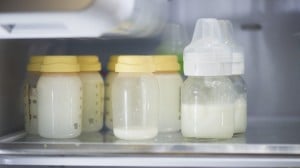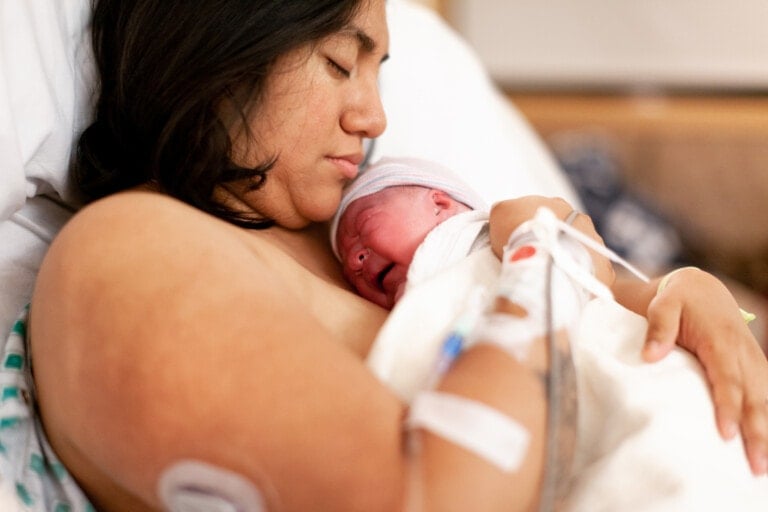As more studies reveal the potential side effects of hormonal contraceptives, such as blood clots and mood disorders, many women seek non-hormonal alternatives to birth control. Natural family planning, also called fertility awareness, is one of these non-hormonal alternatives. It has grown in popularity but has long been used and researched as a way to prevent pregnancy.
Natural family planning uses no medications, devices, or hormones to affect a woman’s menstrual cycle or prevent pregnancy. It simply involves knowledge and awareness of the cycle and protocols for timing intercourse according to your family planning goals. The menstrual cycle has been called the fifth vital sign, and natural family planning gives tons of insight into a woman’s overall health.
What is Natural Family Planning?
Natural family planning refers to a group of methods that help identify days of the month when a woman is likely to become pregnant. Couples can use this information to avoid or achieve pregnancy by timing intercourse accordingly. A woman is only fertile about six days per cycle, whereas a man is always fertile. By avoiding intercourse during a woman’s fertile window, couples can prevent pregnancy without the use of medicines, hormones, or physical barriers. Conversely, by having sex during the fertile time, couples can increase their chances of becoming pregnant.
The Menstrual Cycle
On average, a menstrual cycle lasts 28 days from the start of one period to the beginning of the next. However, this can vary from cycle to cycle and from woman to woman. Ovulation, or the release of an egg from the ovaries, occurs once per cycle, around 14 days before the next menstrual period. Once ovulation occurs, the egg lives only 12-24 hours, while sperm can live in the female reproductive tract between 3-5 days. This means that to make a baby or become pregnant, a couple must have sex during the fertile window or the few days before ovulation through one day after. If a couple wants to avoid pregnancy, they must abstain from intercourse during this interval.
The Fertile Window
Because ovulation may not occur on exactly the same day each cycle, identifying the exact fertile window of each cycle can be tricky. Couples using natural family planning are taught to monitor different physical signs and symptoms that suggest ovulation is coming. They are also taught protocols based on their cycle history to suggest when in their cycle to start looking out for these “warning signs” of ovulation. Paying attention to these clues and their cycle day can help women accurately identify fertility and infertility periods within the month.
Some natural family planning methods can also confirm that ovulation has definitely occurred, at which point couples avoiding pregnancy are safe to resume intercourse until the next fertile window.
Natural Family Planning Methods
There are many different methods of natural family planning. Most methods require formal training to maximize effectiveness. Other methods rely on one or a combination of symptoms, indicators, and algorithms to identify a woman’s potentially fertile days. Some of these indicators include:
Cervical Mucus
In response to hormone fluctuations throughout the cycle, mucus secreted by the cervix exhibits noticeable changes. After a woman’s period ends, she typically has a few dry days. Then, as ovulation approaches, cervical mucus increases in amount, thins out, and becomes more stretchy, watery, and clear. Fertile mucus is often compared to raw egg whites. This type of mucus is the best environment for keeping sperm alive in the vagina and helping it to meet the egg. After ovulation, mucus dries up and becomes thick, sticky, white, and scant.
Women who use mucus methods for natural family planning observe their secretions when using the bathroom throughout the day. They then track or chart the amount and texture of their cervical mucus each evening. Those trying to avoid pregnancy avoid intercourse on “wet” days and typically consider dry days to be useable for sex. Fertility begins roughly around the first day of wetness after your period ends. It does take a few months of observation to notice the differences throughout the cycle.
Many women like this method because it is free and has pretty straightforward “rules.” It also has no side effects. However, it can take a few months of paying attention to learn your body’s patterns. You also have to be able to differentiate between cervical mucus, seminal fluid, arousal fluid, and other discharge. This method can also be frustrating for some couples because the duration of abstinence may be around two weeks per cycle.
Breastfeeding, recurrent vaginal infections, and approaching menopause can also affect whether cervical mucus methods will be a good form of natural family planning for you.
Basal Body Temperature
Basal body temperature refers to your lowest temperature in 24 hours, and it occurs every night in your sleep. It is measured with a very sensitive thermometer after at least three consecutive hours of sleep. The temperature must be taken before getting out of bed, talking, eating, or drinking. Daily temperatures are tracked on an app or paper chart.
Basal body temperature typically dips just before ovulation. In response to a hormone released after ovulation, the temperature then rises between 0.4 and 0.8 degrees Fahrenheit. This temperature rise lasts until your next period. Pregnancy cannot result from intercourse after ovulation has been confirmed by basal body temperature. Therefore, couples trying to avoid pregnancy are safe to have sex after noting a sustained basal body temperature rise, indicating ovulation is passed.
Alcohol or drug use, travel, a poor night’s sleep, shift work, illness, or doing anything in the morning before taking your temperature can affect your daily temperature reading. Basal body temperature protocols typically look for trends and consistency in basal body temperature instead of temperature readings on individual days. For instance, many protocols consider ovulation to have occurred if a temperature rise is sustained for three consecutive days.
Temperature readings cannot accurately predict when ovulation will occur. They can only confirm that it has already happened. Therefore, the basal body temperature method of natural family planning alone cannot identify the beginning of the fertile window, only the end. Since there is not enough warning with basal body temperature alone that ovulation is coming, many couples will use temperature methods in conjunction with other methods.
Urinary Hormone Monitoring
The hormone estrogen rises leading up to ovulation and then luteinizing hormone surges just before ovulation. Therefore, when estrogen begins to rise, a woman can be considered fertile. When luteinizing hormone surges, ovulation usually occurs within the next 24 hours, so the fertile window ends a few days after this peak.
These hormones are excreted in a woman’s urine. Like at-home pregnancy tests checking for the pregnancy hormone in a woman’s urine, women can use daily urine test strips for estrogen and luteinizing hormones. Digital monitors exist to read these test strips, or they can be read manually or with your phone. The test results can be stored in the digital monitor or recorded on an app or manual chart.
Like other methods, couples seeking to avoid pregnancy should avoid intercourse during the fertile window. Couples trying to conceive should have sex during high and peak fertility days.
Many people like this method because it is very black and white—the monitor and an algorithm identify low, high, and peak days, which provide very clear “rules” on when to have sex. It can also be used during more ambiguous periods of fertility, such as during postpartum or breastfeeding, coming off hormonal birth control, or when approaching menopause.
One downside of this method is the expense of the daily test strips and the monitor itself. The hormonal monitoring method of natural family planning also relies heavily on each daily reading, so it is important to remember to test urine each morning. If forgotten, the urine may be too dilute later in the day for an accurate reading.
Calendar Method
Women who have menstrual cycles that are a similar length each month can estimate their fertile window based on their cycle history. Because a period occurs about 14 days after ovulation, a woman can work backward from her next anticipated period to estimate the day of ovulation. The fertile window is calculated to be three days prior to expected ovulation and three days after. This method becomes more accurate over time, as you are able to notice patterns in cycle length.
The calendar method is the least accurate because cycle length and ovulation day can vary from month to month; however, it is easy and free. There is no additional daily monitoring required.
Natural Family Planning Effectiveness
The effectiveness of natural family planning varies widely depending on the method used and couples’ adherence to the rules of each method.
Mucus methods have been shown to be at least 77% effective, but up to 97% effective with perfect use. This means that of 100 couples avoiding sex on every “wet” day, three may become pregnant in a year. Those who do not follow protocols perfectly will have a higher chance of unintended pregnancy.
Urinary hormonal methods of natural family planning have been demonstrated to be up to 93-98% effective with perfect use after being formally trained in the protocol. Any deviation from the protocol increased the unintended pregnancy rate to 14%.
A study on the hormonal method of natural family planning also showed increased effectiveness at achieving pregnancy. 63% of couples using the hormonal method achieved pregnancy during their first month of trying. Comparatively, couples trying to conceive without using any tracking or family planning have about a 20% chance of conceiving each month.
The calendar method is about 76% effective with perfect use.
Many couples learn multiple methods and observe multiple different signs of fertility to increase success. Effectiveness is also heightened by learning formal natural family planning protocols with a trained instructor. It is not recommended to self-teach natural family planning.
How to Do Natural Family Planning
Observe Your Cycle
An excellent place to start with natural family planning is to pay attention to your cycle. Note when your period starts and ends. Pay attention to other symptoms throughout the month that can be related to your cycle and hormones. For instance, some women experience one-sided abdominal pain around ovulation. Maybe you have never paid much attention to your cervical mucus before. It could be worth noticing various signs of fertility. If it turns out that you have a very consistent and predictable 28-day cycle, you may feel comfortable using a calendar method. If your cycle is less regular, maybe you want to learn a more detailed natural family planning method and protocol.
Identify Your Goals
Since natural family planning can be used to avoid and achieve pregnancy, it is important to think about your family planning goals before learning a method. Are you looking to avoid pregnancy for the short term but achieve it in the next few months? If so, it could be a good idea to learn a method that will help you to both avoid and achieve pregnancy. Is it imperative that you avoid pregnancy? Then you may want to choose a method with the highest success rate.
Evaluate Your Lifestyle
Does your routine permit you to test your urine or your temperature first thing in the morning? Then hormonal or basal body temperature methods may be for you. Have you recently come off hormonal birth control or had a baby? Are you breastfeeding? Then hormonal methods might be the most straightforward for you right now. Do you work the night shift or have another unpredictable schedule? A mucus method may be a better fit because you have multiple opportunities to observe your mucus throughout the day.
Choose a Method
Once you have gathered some information about your cycle and thought about your goals and lifestyle, you have enough knowledge to help you choose which type of natural family planning method you want to use. Keep in mind that you can also combine methods for maximum efficacy, ease, comfort, and peace of mind.
Connect With an Instructor
Natural family planning instructors often specialize in one particular method. So once you have decided on a method, it is a good idea to reach out to an instructor. Many instructors also offer a free consultation to help you decide if their method might be a good fit for you. To find an instructor, you can ask your doctor or browse through women’s centers in your area. Many instructors also have their own websites or market through social media. Searching these outlets can help you find an instructor that will be a good fit for you.
Invest in Your Materials
Depending on your chosen method, you may need some new materials. These may include the following:
- Urine test strips
- Basal body temperature thermometer
- Phone apps for charting your cycle (some are free, and some are paid)
- Paper chart
If you have decided on a method and obtained an instructor, your instructor will be a great resource in helping you find the best materials for your situation.
Involve Your Partner
For many birth control methods, such as the pill, an IUD, and the implant, much of the responsibility can fall on the woman to take the medication or get the device. With natural family planning, the woman’s body is being observed since men are always fertile. Although you are only looking at the woman’s fertility signs, you can involve your partner in the charting and testing. This may help a woman not feel like the “gatekeeper” of sex because her partner will be on the same page. Open communication in natural family planning is essential to success and satisfaction.
Is Natural Family Planning Right For You?
There is undoubtedly a learning curve associated with natural family planning. But if you are looking for freedom from birth control or an opportunity to learn more about your body and cycle, it could be a great fit for you. I personally have used it to learn more about my body and avoid and achieve pregnancy during different seasons of my life. Abstinence and deciphering fertility signs can be difficult and frustrating at times. But natural family planning has also strengthened my marriage and given me much more insight into my overall health. I have become so interested in and passionate about fertility signs and the menstrual cycle that I am training to be a natural family planning instructor.
Hopefully, this article provides you with some background knowledge and an idea of where to start your natural family planning journey. If this is something that you are interested in pursuing, definitely talk to your partner and reach out to your doctor. They can help you determine if natural family planning might be a good fit for you.
Finally, please keep in mind that if you are taking or have recently taken hormonal birth control, have recently had a baby or are breastfeeding, or nearing menopause, this may impact whether your body gives the same warning signs before ovulation and whether or not you are ovulating at all. Again, reach out to an instructor or talk to your doctor before changing any practices or medication regimens.






























